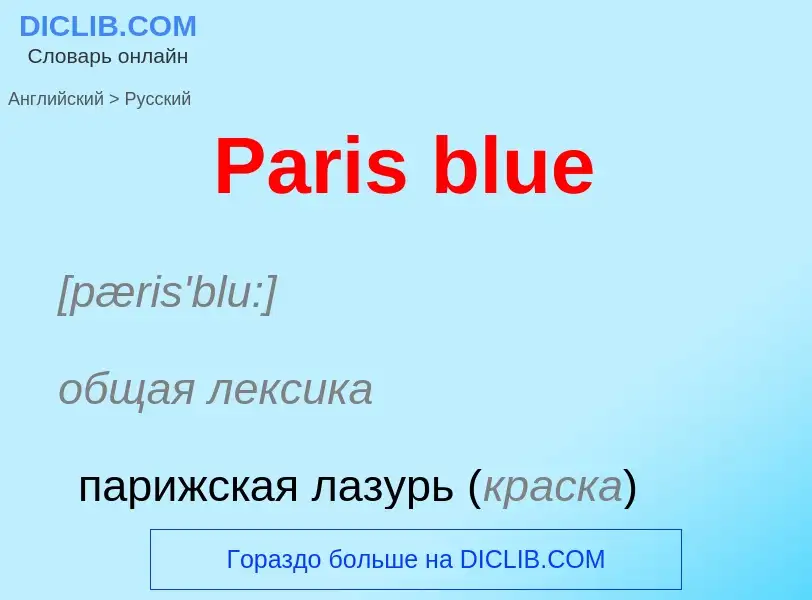Перевод и анализ слов искусственным интеллектом ChatGPT
На этой странице Вы можете получить подробный анализ слова или словосочетания, произведенный с помощью лучшей на сегодняшний день технологии искусственного интеллекта:
- как употребляется слово
- частота употребления
- используется оно чаще в устной или письменной речи
- варианты перевода слова
- примеры употребления (несколько фраз с переводом)
- этимология
Paris blue - перевод на русский
[pæris'blu:]
общая лексика
парижская лазурь (краска)
ярко-синий цвет
парижская лазурь
Определение
Википедия
Prussian blue (also known as Berlin blue, Brandenburg blue or, in painting, Parisian or Paris blue) is a dark blue pigment produced by oxidation of ferrous ferrocyanide salts. It has the chemical formula FeIII
4[FeII
(CN)
6]
3. Turnbull's blue is chemically identical, but is made from different reagents, and its slightly different color stems from different impurities and particle sizes.
Prussian blue was the first modern synthetic pigment. It is prepared as a very fine colloidal dispersion, because the compound is not soluble in water. It contains variable amounts of other ions and its appearance depends sensitively on the size of the colloidal particles. The pigment is used in paints, and it is the traditional "blue" in blueprints, and became prominent in 19th-century aizuri-e (藍摺り絵) Japanese woodblock prints.
In medicine, orally administered Prussian blue is used as an antidote for certain kinds of heavy metal poisoning, e.g., by thallium(I) and radioactive isotopes of caesium. The therapy exploits the compound's ion-exchange properties and high affinity for certain "soft" metal cations.
It is on the World Health Organization's List of Essential Medicines, the most important medications needed in a basic health system. Prussian blue lent its name to prussic acid (hydrogen cyanide) derived from it. In German, hydrogen cyanide is called Blausäure ('blue acid'). French chemist Joseph Louis Gay-Lussac gave cyanide its name, from the Ancient Greek word κύανος (kyanos, 'blue'/'cyan'), because of its Prussian blue color.



![Fe [[coordination sphere]]s in idealized Prussian blue Fe [[coordination sphere]]s in idealized Prussian blue](https://commons.wikimedia.org/wiki/Special:FilePath/Iron-coordination-in-simplified-Prussian-blue-from-xtal-xray-3D-bs-17.png?width=200)
![crystallographic direction]] annotated. Image generated using CrystalMaker® software. crystallographic direction]] annotated. Image generated using CrystalMaker® software.](https://commons.wikimedia.org/wiki/Special:FilePath/Prussian Blue Powder XRD Profile, Simulated.jpg?width=200)
![[[Histopathology]] of the liver, showing a [[Kupffer cell]]s with significant [[hemosiderin]] deposition next to a hepatocyte with [[lipofuscin]] pigment. H&E stain. [[Histopathology]] of the liver, showing a [[Kupffer cell]]s with significant [[hemosiderin]] deposition next to a hepatocyte with [[lipofuscin]] pigment. H&E stain.](https://commons.wikimedia.org/wiki/Special:FilePath/Kupffer cell with hemosiderin and hepatocyte with lipofuscin.jpg?width=200)


